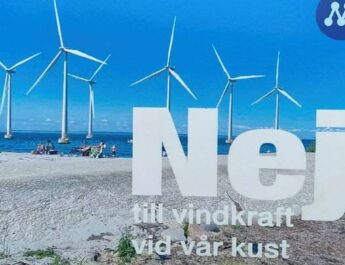- Planetary Heat is Happening Fast, and Faster by Robert Hunziker – counterpunch.org, 19 juni 2023
The evidence is starting to build that all bets are off on predictions that humanity has a decade, or more, of clear sailing before global warming turns vicious enough to run roughshod over climate change deniers and the mean-spirited anti-climate-change Republican Party. Voters better smarten up by 2024 or suffer the consequences. At least the Democrats enacted a partial baby-sized climate bill. Give’em credit.
Recent reports from Copernicus, the EU Earth Observation Programme, and Dr. James Hansen, Earth Institute Columbia University, point to the risks of an earlier than expected upside breakout of the 1.5°C (2.7°F) limit set by the Paris Agreement of 2015 and endorsed by 195 countries. Trump pulled the U.S. out of the Agreement but Biden put the U.S. back in. Trump is 99% anti-science, maybe 100%.
Conclusively, coastal cities of the world should move up target dates for building seawalls. But how many seawalls are on drawing boards? A recent UN report (2022) finds that communities around the world haven’t done nearly enough to prepare for climate change (IPCC Sixth Assessment Report, Climate change 2022: Impacts, Adaptation and Vulnerability).
Restoring wetlands, which act as natural sponges, should be prioritized. Most wetlands have been paved over or plowed under. Coastal cities are not even close to being prepared for ocean flooding episodes, which will one day be greeted by tens of thousands of pissed off citizens stacking sandbags, or will they pack it in and head out for higher territory? They’ll pack it in.
A recent YaleEnvironment360 headline: As 1.5 Degrees Looms, Scientists See Growing Risk of Runaway Warming, Urgent Need to Slash Emissions, March 15, 2023. It’s a nice headline but forget it; slashing emissions has never happened, and it won’t until lower Manhattan floods for good. Factually, “an urgent need to slash emissions” is not anywhere to be found. It’s just simply not happening.
Sure, auto manufacturers are ga-ga about electric cars. Just imagine the revenue stream from replacing a worldwide fleet of gas guzzlers and yes, solar and wind are on the go. But several factors beyond EVs and solar are key to the reality of progression or decline, as fossil fuel emissions hit a new record in 2022, and ocean heat, where most of the heat is stored, hit new highs in 2022.
Significantly, maybe most importantly, carbon uptake by natural ecosystem channels has taken a big hit with degraded lands and overused waters taking up less and less CO2: “Carbon uptake by oceans has fallen 4 percent, while uptake by land has fallen 17 percent… and the challenge is likely to grow more severe.” (Source: As 1.5 Degrees Looms, Scientists See Growing Risk of Runaway Warming, Urgent Need to Slash Emissions, YaleEnvironment360, March 15, 2023).
That’s what happens when ecosystems are destroyed, ignored, or abused as if garbage dumps. Frankly, it’s the history of how life-sourcing ecosystems throughout the world are treated, and now natural carbon uptake has been severely crippled. It must be restored, or there’s no chance to successfully battle global warming. Direct Air Capture of CO2 can’t do the job for several reasons beyond the scope of this article.
Copernicus’s most recent broadside explains current global warming, rather bluntly: “Global-mean surface air temperatures for the first days of June 2023 were the highest in the ERAS data record for early June by a substantial margin, following a May during which sea-surface temperatures were at unprecedented levels for the time of year.” (Source: Tracking Breaches of the 1.5°C Global Warming Threshold, Copernicus, June 15, 2023)
According to the report, the global-mean temperature breached the 1.5°C limit during the first week of June. However, whether this early breach holds up going forward will be monitored. According to Copernicus: “The 1.5C and 2.0C limits set in the Paris Agreement are targets for the average temperature of the planet over the twenty or thirty-year periods typically used to define climate.” Meanwhile, breaches of 1.5C are occurring with more and more regularity.
Additionally, an incipient El Niño Pacific Ocean warming cycle is on the immediate horizon and will bring unwelcomed hottish tailwinds, cranking up temperatures even more. As such, 2023-24 could be worse than 2022, but how could it be any worse for Europe? Answer: Rather than one-hundred, hundreds upon hundreds of parched communities without tap water and all commercial barges stuck in mud.
James Hansen’s recent email letter, El Nino and Gl0bal Warming Acceleration, June 14, 2023, points to the impact of the Faustian bargain whereby clean energy displaces fossil fuel particulate matter, aka: the global dimming curse (Stanhill, 2006). As stated by Hansen: “The principal mechanism that may cause acceleration of global warming is a decrease of human-caused aerosols (particulate air pollution), which reflect sunlight and thus have a cooling effect that partially offsets warming by greenhouse gases (GHGs).
The Faustian bargain, i.e., human-generated particulates removed from the sky via mitigation of greenhouse gas sources paradoxically means: “We have suggested that a significant payment in accelerated global warming is now coming due.” For example, particulate matter that reflects sun radiation has decreased as the International Maritime Organization set strict limits on the sulfur content of ship fuels. Thus, removing a horrible sore point of global warming brings on more global warming! The Faustian Bargain at work.
Of special interest, according to Hansen: “There has been a staggering increase in Earth’s energy imbalance (EEI)… About 90% of the change of EEI is change of the heat content of the ocean, which is sampled by a fleet of about 4000 deep-diving Argo floats. Earth’s energy imbalance was 0.71 W/m2 during the 10-year calibration period, but EEI has subsequently increased to well over 1 W/m2.”
EEI is the driving force for global warming. Consequently, Hansen’s dot-plot yellow graph appears to place 1.5°C smack dab into the mid 2020s. That’s way-way ahead of schedule and should rattle the cages of world leaders.
Beyond 1.5°C things get dicey crazy scary triggering tipping points that could bring runaway global warming more directly to expressways, businesses and living rooms. Europe has already experienced this as EU temperatures are 2-times hotter than the global average (World Meteorological Organization).
For example, with last year’s temperatures one of the hottest years on record, the EU was a climate train wreck. Commercial barges sputtered in the mud of major European waterways, the Rhine, and the Danube whilst Italy and France furiously delivered drinking water via truck to over 100 parched out-of-tap-water communities. What’ll it be like when things get bad?
Cynically, one must wonder where leadership comes into play. Scientists have been warning Congress and the executive branch for years that fossil fuel emissions will be the end game for the great American experiment in social democracy. Republicans across the board make fun of climate change and oil companies filter dark money into their campaign buckets, as global warming is sold down the drain to the highest bidders. This is a horrifying mess but who’ll take the blame when it hits the fan?
- Planetary Heat is Happening Fast, and Faster by Robert Hunziker – counterpunch.org, 19 juni 2023
Robert Hunziker lives in Los Angeles and can be reached at rlhunziker@gmail.com.


